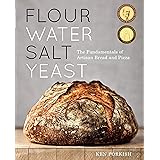Do you ever wonder about the fundamental differences between various food categories, especially when navigating culinary choices or understanding different diets? The insightful video above offers a foundational introduction to common vegetarian and non-vegetarian foods, clearly defining each category with straightforward examples. Building upon that excellent groundwork, this article will delve deeper into the distinctions, exploring the diverse ranges of ingredients and the significant reasons behind these dietary classifications.
Understanding these basic food categories is crucial for making informed decisions about what we eat, whether for health, ethical, or cultural reasons. This comprehensive guide aims to broaden your knowledge, providing additional context and practical insights into the world of dietary choices that extend beyond the basic definitions.
Understanding Vegetarian Foods: A Plant-Based Approach
Vegetarian cuisine primarily focuses on ingredients derived from plants, completely excluding meat, poultry, and seafood. As the video highlights, this category encompasses a vast array of delicious and nutritious options, offering incredible versatility in meal preparation. These plant-based diets are increasingly recognized globally for their potential health advantages and environmental benefits.
Key Characteristics of Vegetarian Foods
Vegetarian foods are typically rich in fiber, vitamins, and minerals, contributing significantly to a balanced diet. Individuals following this dietary pattern enjoy an abundance of fruits, vegetables, grains, legumes, and nuts. Approximately 375 million people worldwide identify as vegetarian, underscoring its widespread adoption and cultural importance across various regions.
Common Examples of Vegetarian Foods
Expanding on the video’s excellent examples, here are some widely consumed vegetarian foods:
- Dairy Products: Milk, curd (yogurt), cheese, and paneer are popular sources of protein and calcium for many vegetarians.
- Legumes: Lentils, chickpeas, beans (like kidney beans and black beans), and peas offer substantial plant-based protein and fiber.
- Soy Products: Tofu, tempeh, and soya chunks are versatile protein sources, often used as meat substitutes due to their texture and ability to absorb flavors.
- Grains: Rice, wheat, oats, barley, and quinoa form the staple of many vegetarian diets, providing essential carbohydrates and energy.
- Fruits and Vegetables: An endless variety of fresh produce, from leafy greens to root vegetables and seasonal fruits, provides crucial vitamins and antioxidants.
- Nuts and Seeds: Almonds, walnuts, cashews, chia seeds, and flaxseeds are excellent sources of healthy fats, protein, and micronutrients.
Moreover, the culinary possibilities with these ingredients are vast, allowing for flavorful and satisfying meals. Many traditional dishes globally are naturally vegetarian, showcasing the rich heritage of plant-based cooking.
Exploring Non-Vegetarian Foods: Animal-Based Proteins
In contrast to plant-based diets, non-vegetarian diets incorporate animal flesh, including meat, poultry, and seafood. The video accurately defines this category, offering clear examples of popular choices. This dietary preference is common globally and forms a significant part of many cultures’ traditional cuisines.
Key Aspects of Non-Vegetarian Foods
Non-vegetarian foods are often valued for their high protein content, iron, vitamin B12, and other essential nutrients that are less abundant in plant-based sources. For instance, lean red meat provides heme iron, which is more readily absorbed by the body than non-heme iron found in plants. A significant majority of the global population, estimated at over 85%, consumes some form of animal products, highlighting its widespread integration into daily diets.
Common Examples of Non-Vegetarian Foods
Building upon the foundational examples provided in the video, here are further details on widely consumed non-vegetarian foods:
- Poultry: Chicken and turkey are popular choices, known for being leaner protein sources.
- Fish and Seafood: This category includes fish (like salmon, tuna, cod) and shellfish (such as shrimps, prawns, crabs, lobsters), offering Omega-3 fatty acids and iodine.
- Red Meat: Beef, lamb, and pork are significant sources of iron and protein in many diets worldwide.
- Eggs: A versatile and complete protein source, eggs are consumed widely and offer a range of vitamins and minerals.
Subsequently, the preparation methods for non-vegetarian foods are diverse, ranging from grilling and roasting to stewing and frying. These methods often enhance the natural flavors and textures of the animal products, contributing to a rich culinary experience.
Differentiating Vegetarian and Non-Vegetarian Diets
The primary distinction between vegetarian and non-vegetarian foods lies in the inclusion or exclusion of animal flesh. However, there are further nuances within vegetarianism itself. For example, some vegetarians consume dairy and eggs (Lacto-Ovo vegetarians), while others avoid them (vegans). This dietary spectrum offers individuals numerous choices tailored to their specific beliefs and nutritional needs.
Nutritional Considerations and Dietary Balance
Regardless of whether one chooses a vegetarian or non-vegetarian diet, ensuring a balanced intake of nutrients is paramount for overall health. Both dietary patterns can be exceptionally healthy when thoughtfully planned and executed. For instance, vegetarians must ensure adequate intake of nutrients like vitamin B12, iron, and Omega-3 fatty acids, often found abundantly in animal products. Conversely, non-vegetarians benefit from incorporating ample fruits, vegetables, and whole grains to balance their protein intake with fiber and micronutrients.
For example, a study published in the Journal of the American Medical Association found that plant-based diets could significantly reduce the risk of heart disease by up to 25%. In parallel, carefully planned non-vegetarian diets provide readily available complete proteins essential for muscle repair and growth, as highlighted by numerous sports nutrition studies. Consequently, making informed food choices from both categories, or specializing in one, requires a good understanding of nutritional science.
Ultimately, the choice between consuming vegetarian and non-vegetarian foods is a personal one, influenced by various factors including culture, ethics, health goals, and personal preferences. Both categories offer unique culinary experiences and nutritional profiles, contributing to the rich diversity of global food practices.











